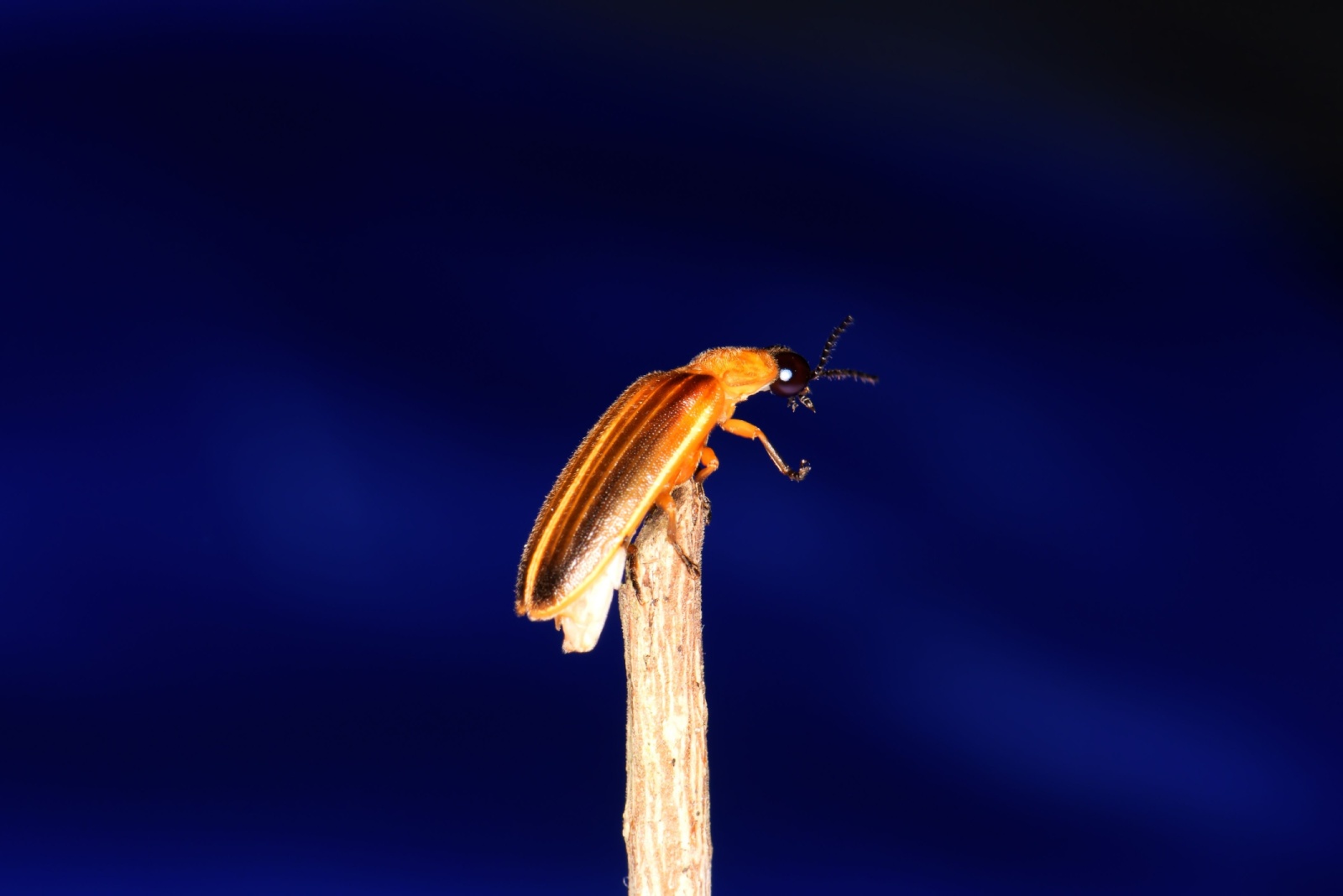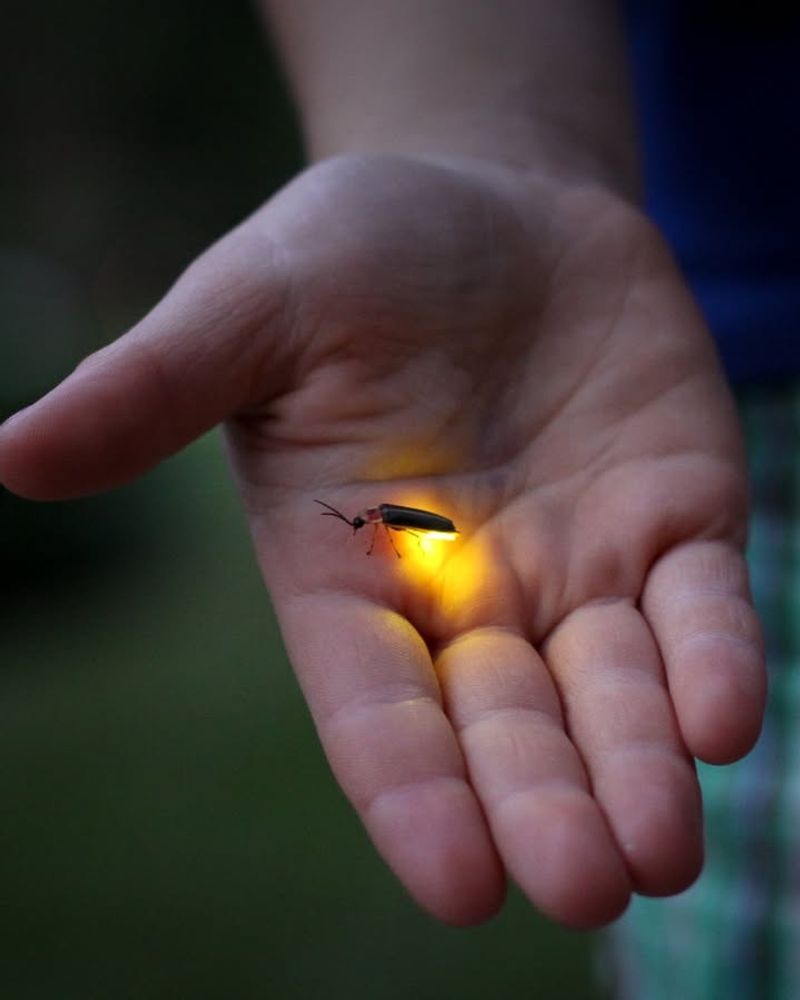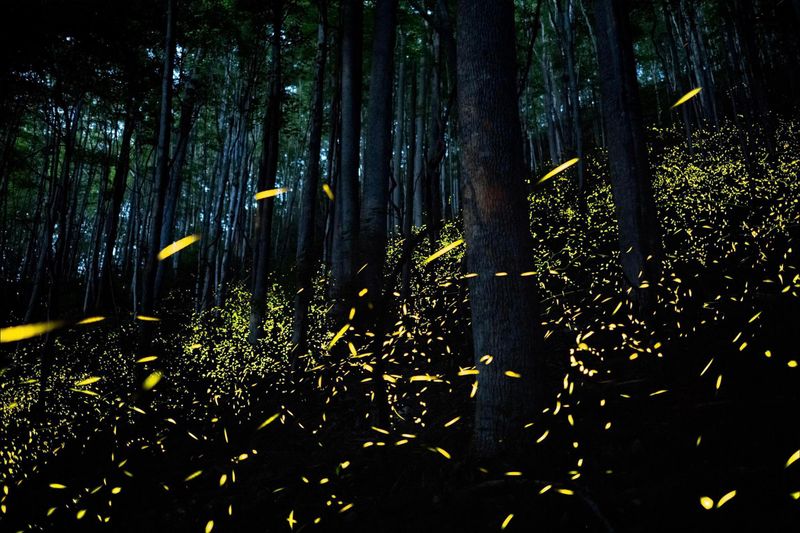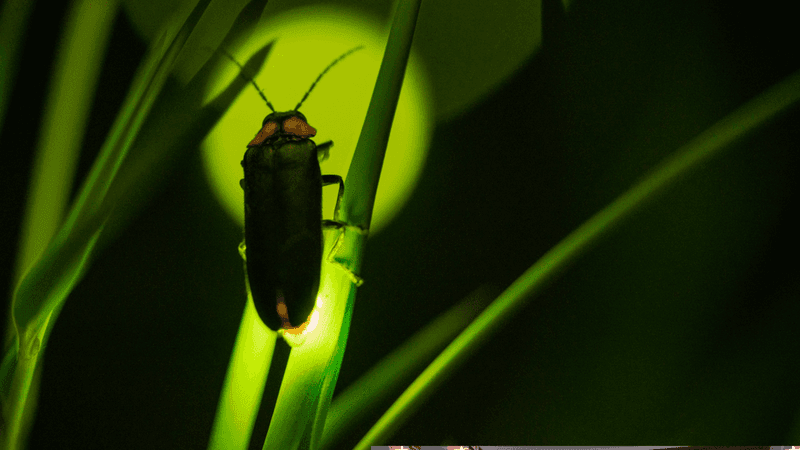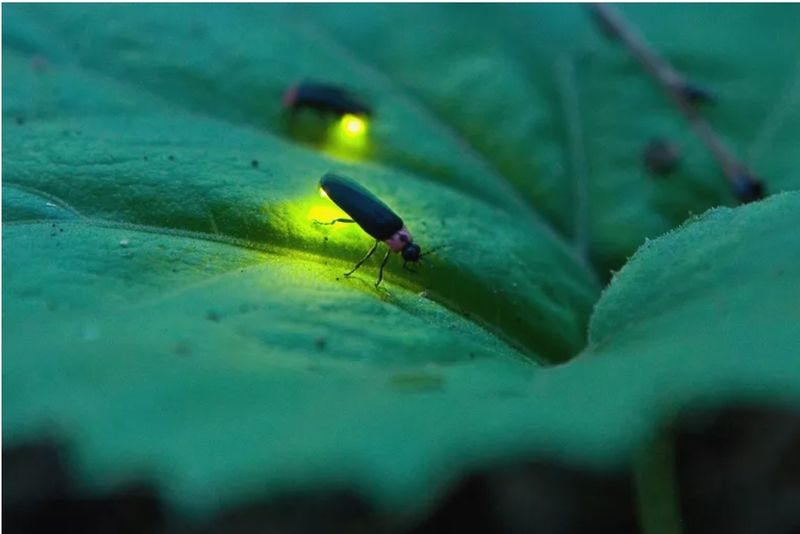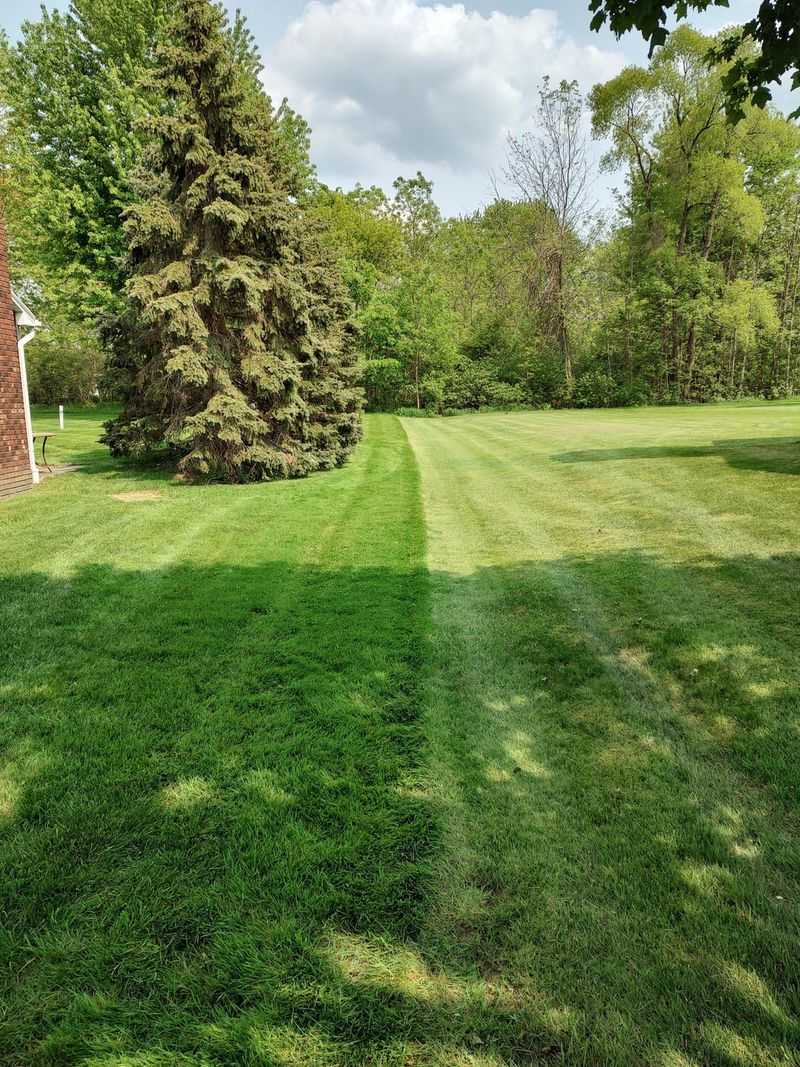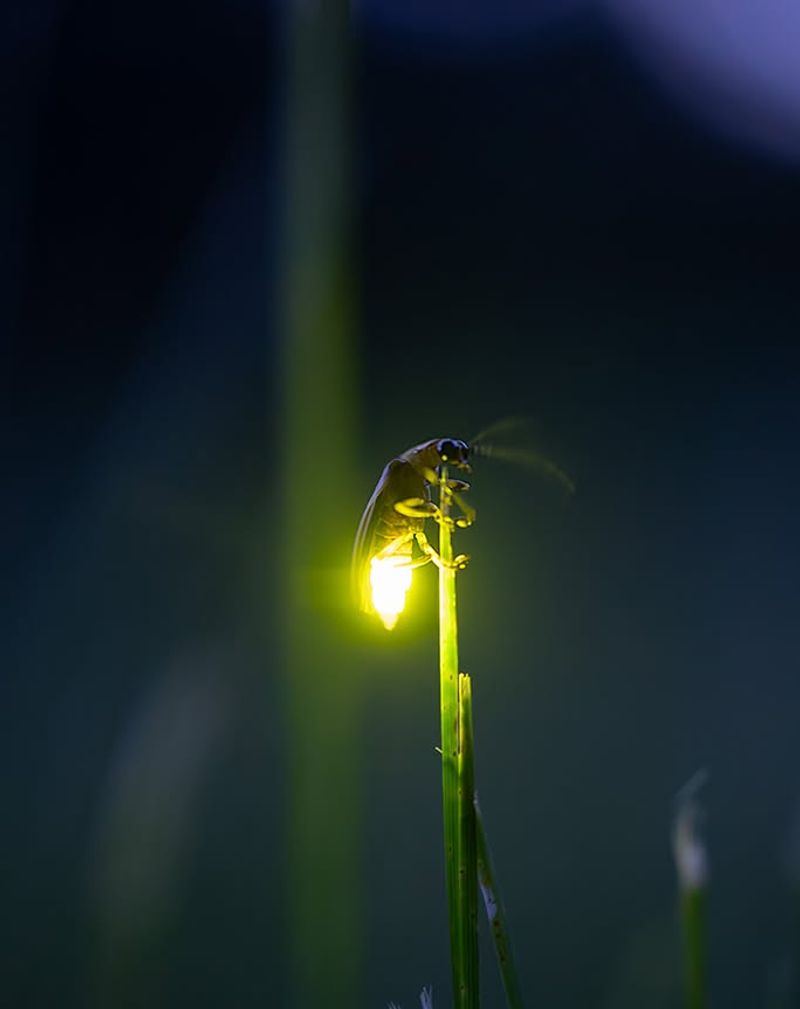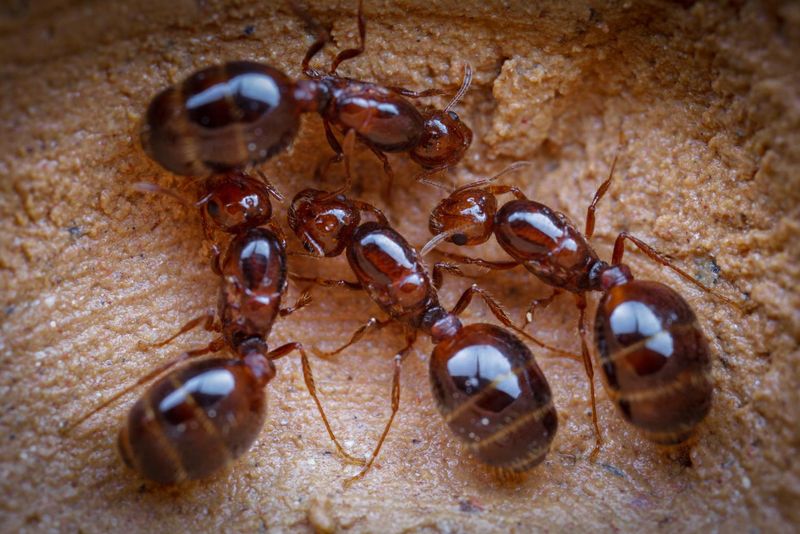Fireflies have lit up Alabama’s summer nights for generations, creating magical displays that kids and adults alike have cherished. But lately, fewer of these glowing insects are appearing in backyards and fields across the state.
Understanding why fireflies are vanishing helps us protect these special creatures and the beautiful light shows they bring to our warm Southern evenings.
1. Light Pollution Disrupts Their Glow
Streetlights, porch lights, and glowing signs from businesses make it harder for fireflies to find mates. Male fireflies flash specific patterns to attract females, but artificial lighting drowns out these natural signals.
When fireflies can’t communicate properly, they struggle to reproduce and their numbers drop. Towns and cities across Alabama have grown brighter over the years, creating serious problems for these light-dependent insects.
Turning off unnecessary outdoor lights during summer evenings can make a real difference in helping local firefly populations recover.
2. Pesticides And Chemicals Harm Firefly Larvae
Many homeowners spray their lawns with chemicals to kill mosquitoes and other bugs, but these pesticides don’t discriminate. Firefly larvae live in the soil for up to two years before becoming adults, making them vulnerable to lawn treatments.
Even small amounts of certain chemicals can kill developing fireflies or make them too weak to survive. Agricultural pesticides used on Alabama farms also wash into nearby areas where fireflies live.
Choosing natural pest control methods protects fireflies and other beneficial insects in your neighborhood.
3. Loss Of Natural Habitat
As Alabama’s population grows, forests, wetlands, and meadows get replaced by houses, shopping centers, and parking lots. Fireflies need specific environments with tall grass, leaf litter, and moist soil to complete their life cycle.
When developers clear land, they destroy the homes where fireflies have lived for countless generations. Female fireflies lay eggs in damp soil near rotting wood and vegetation, which disappears when land gets paved over.
Preserving wild spaces in your community gives fireflies the habitat they desperately need to survive.
4. Climate Change Affects Their Life Cycle
Fireflies depend on specific temperature and moisture levels to thrive, but Alabama’s weather patterns are becoming less predictable. Longer droughts dry out the soil where firefly larvae develop, while sudden heavy rains can flood their underground homes.
Warmer winters may cause fireflies to emerge at the wrong time, missing their usual mating season. Temperature shifts also affect the snails, slugs, and worms that firefly larvae eat for survival.
These climate disruptions create a domino effect that makes it harder for firefly populations to bounce back.
5. Excessive Lawn Mowing Destroys Their Environment
Perfectly trimmed lawns might look neat, but they’re terrible for fireflies. When grass gets cut too short and too often, it removes the cover that adult fireflies use during the day to hide from predators.
Frequent mowing also disturbs the soil surface where larvae live and eliminates the fallen leaves and plant matter they need. Alabama homeowners who mow weekly throughout summer unknowingly destroy firefly habitat right in their own yards.
Letting some areas grow wild or mowing less frequently creates safer spaces for these glowing beetles to flourish.
6. Water Pollution Threatens Breeding Grounds
Fireflies prefer living near streams, ponds, and wetlands where the air stays humid and the ground remains moist. Unfortunately, fertilizer runoff from lawns and farms carries nitrogen and phosphorus into Alabama’s waterways, creating toxic conditions.
Oil and chemicals from roads wash into drainage ditches and creeks during rainstorms, poisoning the small creatures that firefly larvae eat. When water quality declines, entire firefly populations in the surrounding area can collapse within just a few years.
Protecting local water sources directly helps fireflies and countless other wildlife species survive.
7. Invasive Fire Ants Compete For Food
Red imported fire ants arrived in Alabama decades ago and have spread across the entire state. These aggressive insects attack firefly larvae in the soil and compete for the same food sources like small insects and worms.
Fire ants also change the soil composition in ways that make it less suitable for fireflies to develop properly. Their large colonies can dominate an area, pushing out native species that have lived there for thousands of years.
Controlling fire ant populations through targeted methods helps restore balance to Alabama’s ecosystem and gives fireflies a fighting chance.

